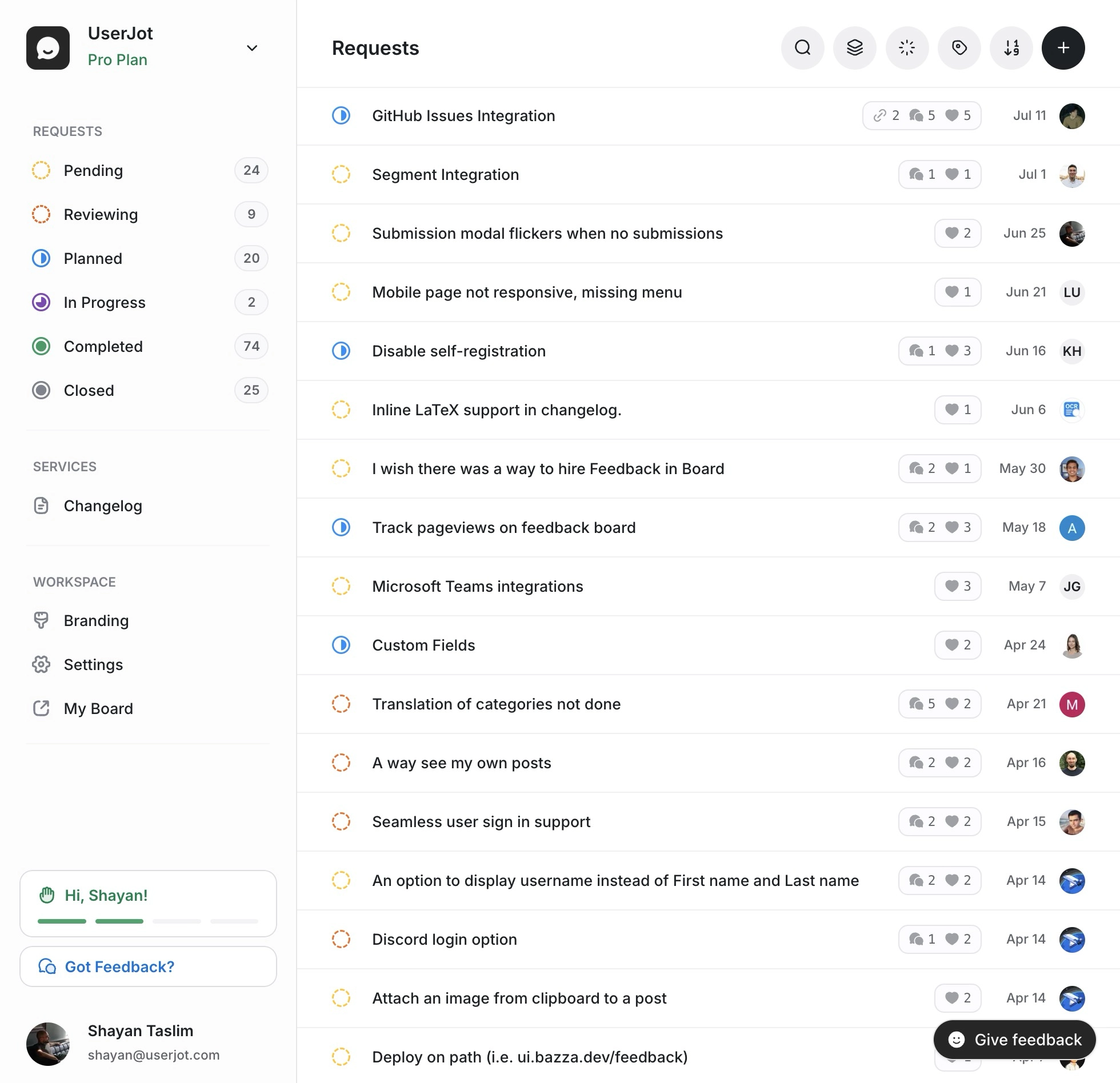Pendo Pricing in 2025: What It Actually Costs

Pendo doesn’t publish its pricing. To get a quote, you have to talk to sales. This makes it hard to know what you’re getting into before committing to a conversation.
We dug through public data, vendor negotiation reports, and user discussions to give you a realistic picture of what Pendo actually costs. The short version: it’s expensive, and the final price depends heavily on your Monthly Active Users (MAUs) and negotiation skills.
Pendo Pricing Overview
Pendo has five plans: Free, Base, Core, Pulse, and Ultimate. Only the Free plan has public pricing. Everything else requires a sales call.
Pendo Estimated Monthly Costs (Annual Contracts)
Typical annual costs based on public data:
| Plan | Annual Cost | MAUs | What’s Included |
|---|---|---|---|
| Free | $0 | 500 | Basic analytics, guides, NPS |
| Base | $7,000-15,000 | 2,000-5,000 | Core analytics, 1 integration |
| Core | $15,000-35,000 | 5,000-20,000 | Advanced analytics, more integrations |
| Pulse | $35,000-70,000 | 20,000-50,000 | Feedback module, AI features |
| Ultimate | $70,000-130,000+ | 50,000+ | Everything, dedicated support |
These ranges come from vendor negotiation data and user reports. Your actual quote will vary based on MAUs, contract length, and how well you negotiate.
How Pendo Pricing Works
Pendo uses MAU-based pricing, meaning you pay based on how many Monthly Active Users interact with your product. As your user base grows, your Pendo bill grows too.
What counts as an MAU:
- Any user who logs into your product
- Users who interact with Pendo guides or tooltips
- Users who respond to NPS surveys
- Users tracked by Pendo analytics
This is different from “tracked users” (like Canny uses) or “seats” (like most SaaS tools). You’re paying for scale, not for team members.
The sliding scale:
- Cost per MAU decreases as volume increases
- But total cost increases significantly
- 10,000 MAUs costs more than 2,000, even though the per-MAU rate is lower
The Free Plan
Pendo Free is genuinely free, with no time limit. It’s a reasonable way to try the platform.
What’s included:
- Up to 500 MAUs
- Basic product analytics
- In-app guides (with Pendo branding)
- NPS surveys (with Pendo branding)
- Basic roadmaps (with Pendo branding)
- Community support only
What’s not included:
- Feedback module
- Session replay
- Advanced analytics
- Custom branding (Pendo logo appears everywhere)
- Any integrations beyond basics
- Real support
The free plan works for very early-stage products or for evaluating the platform. Once you hit 500 MAUs or need features like integrations, you’ll be pushed to paid plans.
Paid Plans: What You’ll Actually Pay
Since Pendo doesn’t publish pricing, here’s what we’ve gathered from vendor data and user reports:
Base Plan (~$7,000-15,000/year)
The entry-level paid plan. Designed for smaller teams getting started with product analytics.
Includes:
- 2,000-5,000 MAUs (varies by contract)
- Core analytics features
- In-app guides without branding
- 1 integration
- Standard support
What it lacks:
- Feedback module (costs extra)
- Session replay (costs extra)
- Advanced segmentation
- Multiple integrations
Reality check: $7,000/year for basic analytics and guides. That’s $583/month. At this price, you’re paying enterprise rates for starter features.
Core Plan (~$15,000-35,000/year)
The mid-tier option for growing teams who need more analytics depth.
Includes:
- 5,000-20,000 MAUs
- Advanced analytics (funnels, paths, retention)
- Multiple integrations
- Better segmentation
- Priority support
What it lacks:
- Feedback module (still extra)
- Session replay (still extra)
- AI features
- Dedicated support
Reality check: At $20,000/year, you’re paying $1,666/month. This is where most growth-stage companies land, and it’s a significant budget line item.
Pulse and Ultimate Plans (~$35,000-130,000+/year)
Enterprise tiers for large organizations with tens of thousands of MAUs.
Includes:
- 20,000-100,000+ MAUs
- Feedback module (Pendo Listen)
- AI-powered features
- Advanced roadmaps
- Dedicated customer success manager
- Custom integrations
- Priority SLA
Reality check: At $47,000/year (a commonly reported average), you’re paying nearly $4,000/month. Some enterprises report quotes over $100,000/year for large deployments.
Stop guessing what to build. Let your users vote.
Try UserJot freeHidden Costs and Add-Ons
Pendo’s base pricing doesn’t include everything. Several features cost extra:
Feedback Module
Pendo’s feedback features (collected ideas, voting, customer insights) are a separate add-on called Pendo Listen. This was originally a separate product called Receptive that Pendo acquired.
Cost: Typically 20-30% on top of your base plan Why it matters: If feedback collection is your main goal, you’re paying for analytics you might not need, plus an add-on for the feedback features.
Session Replay
Recording user sessions to see exactly what they’re doing. Useful for debugging and UX research.
Cost: Additional fee, varies by plan Why it matters: This is standard in tools like Hotjar or FullStory, but costs extra in Pendo.
Additional Integrations
The Base plan includes only 1 integration. Need Salesforce AND Jira? That requires a higher tier or add-on fees.
Renewal Increases
Pendo contracts typically include automatic price increases:
- Standard: 5% annual increase
- Can be as high as 20% in some contracts
- Multi-year deals may lock in rates but reduce flexibility
Negotiation Tips
Since Pendo requires sales conversations, negotiation matters. Based on vendor data:
What’s possible:
- 41-46% discounts are reported on 1-3 year deals
- End-of-quarter timing can help
- Committing to longer contracts gets better rates
- Removing unused features can reduce costs
What to watch for:
- Auto-renewal clauses (opt out before they kick in)
- MAU overages (understand what happens if you exceed limits)
- Price increase caps (negotiate these into the contract)
- Module bundling (don’t pay for feedback if you won’t use it)
Is Pendo Worth the Cost?
Pendo makes sense if:
- You’re an enterprise with 50,000+ users and budget to match
- You need deep product analytics as your primary use case
- You have dedicated resources to manage the platform
- You’re already using Jira/Salesforce and need those integrations
- You want one platform for analytics, guides, AND feedback
Pendo is probably overkill if:
- You mainly need feedback collection and roadmaps
- Your budget is under $10,000/year for these tools
- You don’t have someone dedicated to managing Pendo
- You’re a startup or small team
- You need a changelog (Pendo doesn’t have one)
Alternatives to Consider
If Pendo’s pricing doesn’t fit your budget or needs, here are options at different price points:
For Feedback + Roadmaps

UserJot focuses on feedback collection, roadmaps, and changelogs at a fraction of Pendo’s cost.
| UserJot | Pendo | |
|---|---|---|
| Starting Price | $29/mo | ~$7,000/yr |
| Free Plan | Yes (unlimited users) | Yes (500 MAUs) |
| Changelog | Built-in | Not included |
| Feedback | Included | Add-on cost |
| Pricing Model | Flat rate | MAU-based |
Pricing: Free plan available. Paid plans from $29/month with no per-user limits.
For Analytics
- Hotjar - Heatmaps and session recordings from $32/month
- Mixpanel - Product analytics with a generous free tier
- Amplitude - Enterprise analytics, also has free tier
For In-App Guides
- Userflow - Onboarding flows from $240/month
- Appcues - In-app experiences from $249/month
- Chameleon - Product tours from $279/month
Many teams find that using separate, focused tools for analytics, guides, and feedback costs less than Pendo’s all-in-one approach while giving them better capabilities in each area.
Frequently Asked Questions
How much does Pendo cost per month?
Pendo doesn’t offer monthly billing. All plans are annual contracts. The effective monthly cost ranges from $583/month (Base plan) to $4,000+/month (Enterprise), depending on your MAUs and features.
Is Pendo free?
Pendo has a free plan limited to 500 MAUs with basic features and Pendo branding. It’s genuinely free with no time limit, but most growing products will outgrow it quickly.
What are MAUs in Pendo?
MAUs (Monthly Active Users) are unique users who interact with your product in a given month. Pendo tracks these automatically. Your pricing tier is based on how many MAUs you have, with costs increasing as your user base grows.
Can you negotiate Pendo pricing?
Yes. Vendor data shows discounts of 41-46% are possible, especially for multi-year commitments or end-of-quarter deals. Always negotiate, and get multiple quotes before signing.
Why doesn’t Pendo publish pricing?
Like many enterprise software companies, Pendo uses sales-led pricing to maximize deal size based on company budget and needs. This allows them to charge more to larger companies while offering discounts to win competitive deals.
Does Pendo include feedback features?
Feedback collection (Pendo Listen/Feedback) is a separate module that costs extra on top of base plans. If feedback is your primary need, you’ll pay for analytics you might not use plus the feedback add-on.
What’s cheaper than Pendo for feedback?
For feedback, roadmaps, and changelogs specifically: UserJot ($29/month), Canny (from $24/month), or Sleekplan (from $13/month) are all dramatically cheaper than Pendo’s $7,000+ annual starting price.
Does Pendo have a changelog?
No. Pendo doesn’t include a built-in changelog feature. You’d need to use in-app guides to announce updates or add a separate changelog tool like Beamer or UserJot.
How does Pendo compare to Mixpanel or Amplitude?
Pendo, Mixpanel, and Amplitude all offer product analytics. Pendo adds in-app guides and feedback tools but costs more. Mixpanel and Amplitude have more generous free tiers and are often cheaper for pure analytics use cases.
Is Pendo good for startups?
Generally no. Pendo’s pricing ($7,000+ to start), complexity, and enterprise focus make it a poor fit for most startups. Simpler, cheaper tools like UserJot, Hotjar, or Mixpanel’s free tier are better starting points.